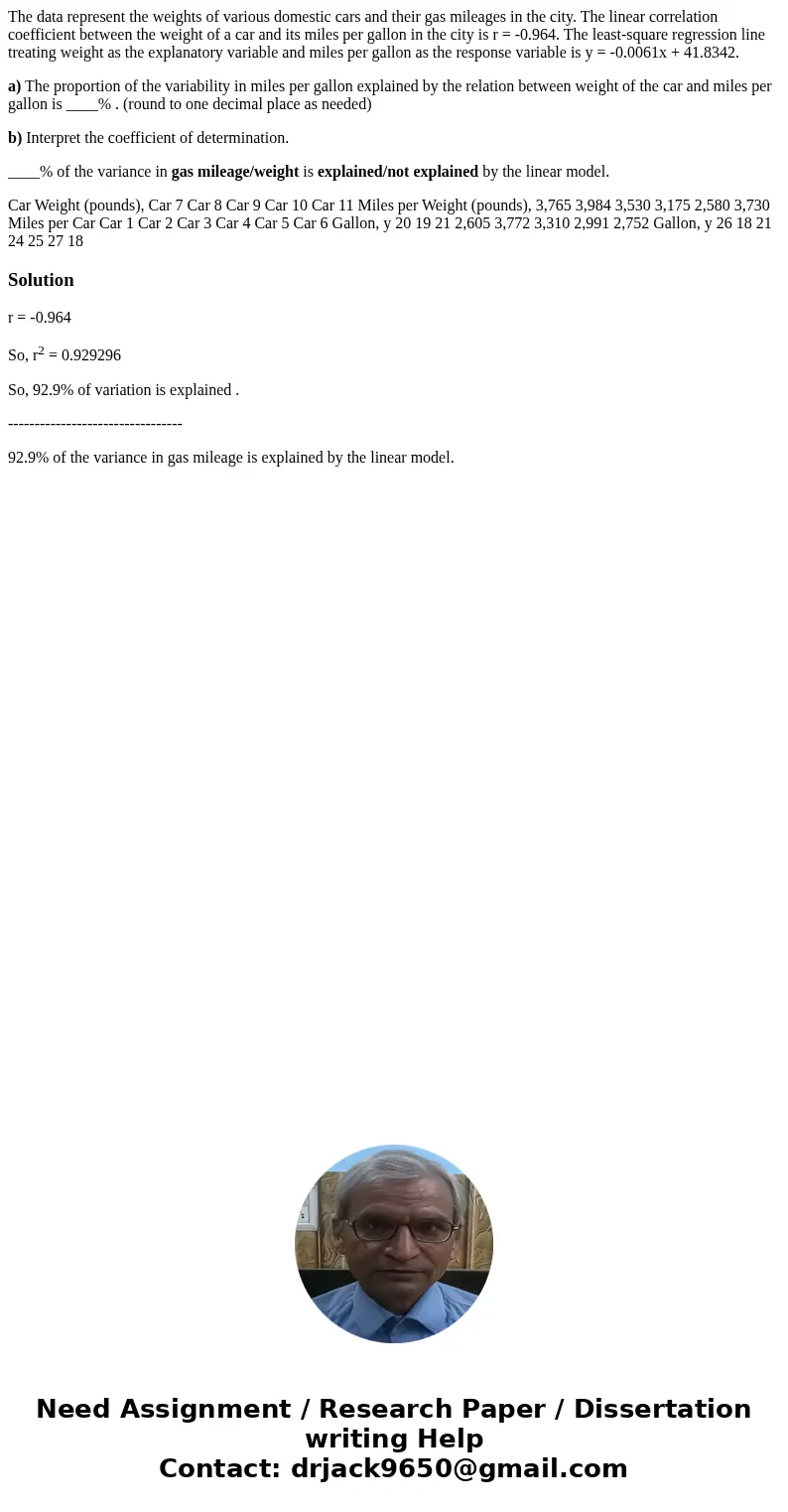The data represent the weights of various domestic cars and
The data represent the weights of various domestic cars and their gas mileages in the city. The linear correlation coefficient between the weight of a car and its miles per gallon in the city is r = -0.964. The least-square regression line treating weight as the explanatory variable and miles per gallon as the response variable is y = -0.0061x + 41.8342.
a) The proportion of the variability in miles per gallon explained by the relation between weight of the car and miles per gallon is ____% . (round to one decimal place as needed)
b) Interpret the coefficient of determination.
____% of the variance in gas mileage/weight is explained/not explained by the linear model.
Car Weight (pounds), Car 7 Car 8 Car 9 Car 10 Car 11 Miles per Weight (pounds), 3,765 3,984 3,530 3,175 2,580 3,730 Miles per Car Car 1 Car 2 Car 3 Car 4 Car 5 Car 6 Gallon, y 20 19 21 2,605 3,772 3,310 2,991 2,752 Gallon, y 26 18 21 24 25 27 18Solution
r = -0.964
So, r2 = 0.929296
So, 92.9% of variation is explained .
---------------------------------
92.9% of the variance in gas mileage is explained by the linear model.

 Homework Sourse
Homework Sourse